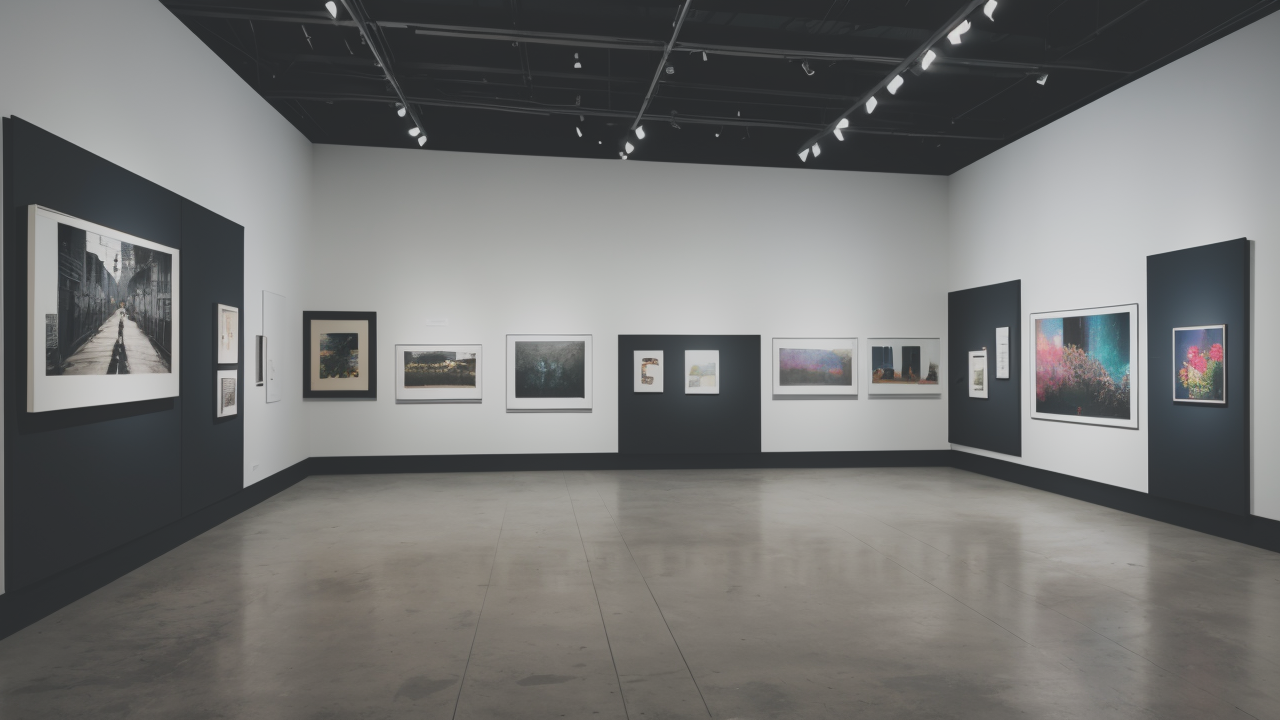
Wabi-Sabi Meets Pop: Analyzing Trends in Contemporary Colorful Art Events
The Intersection of Wabi-Sabi and Pop Culture in Art
The Origins of Wabi-Sabi and Its Influence on Modern Art
Wabi-sabi is a Japanese aesthetic philosophy that values simplicity and imperfection. It emerged from Zen Buddhism in the 15th century. The concept embraces the beauty of flaws and the passage of time.

In modern art, wabi-sabi has inspired many artists to explore natural materials and organic forms. They often create works that highlight imperfections and weathered surfaces. This approach contrasts with the sleek, mass-produced aesthetics of the modern world.
Artists like Isamu Noguchi have incorporated wabi-sabi principles into their sculptures. They use rough-hewn stone and asymmetrical shapes to evoke a sense of timelessness. This influence has spread to various art forms, including pottery, painting, and installation art.
The Rise of Pop Art in the United States and its Synergy with Wabi-Sabi Aesthetics
Pop art emerged in the 1950s as a reaction to abstract expressionism. It celebrated popular culture and everyday objects. Artists like Andy Warhol and Roy Lichtenstein used bold colors and commercial imagery in their work.
At first glance, pop art seems to clash with wabi-sabi's focus on simplicity. However, both styles share an interest in the ordinary and overlooked. Pop art elevates common objects, while wabi-sabi finds beauty in the mundane.
This unexpected synergy has led to interesting collaborations in contemporary art. Some artists combine pop art's vivid colors with wabi-sabi's appreciation for imperfection. The result is a unique blend of old and new, East and West.
Key Contemporary Colorful Art Events and Their Impact
Notable Colorful Art Exhibitions Around the World
Colorful art exhibitions have gained popularity worldwide, often blending various styles and influences. The "Color Factory" in New York City is a prime example. It features interactive installations that celebrate hues in all forms.

In Tokyo, the "teamLab Borderless" digital art museum offers a mesmerizing blend of technology and tradition. Visitors walk through rooms filled with ever-changing light projections. These displays often incorporate elements of Japanese art and nature.
The Venice Biennale, a major international art exhibition, has showcased colorful installations. In recent years, artists have presented works that combine vibrant pop aesthetics with wabi-sabi-inspired elements.
These events have sparked conversations about color's role in art and its cultural significance. They've also encouraged viewers to interact with art in new and exciting ways.
How Pop and Wabi-Sabi Elements Have Shaped US Art Events
In the United States, art events have increasingly incorporated both pop and wabi-sabi elements. The Burning Man festival in Nevada is a notable example. It features large-scale sculptures that often blend bright colors with natural materials.
Museums like the Museum of Modern Art (MoMA) in New York have hosted exhibitions that explore this intersection. They've showcased works by artists who combine pop art's bold palette with wabi-sabi's appreciation for imperfection.
Street art festivals across the country have also embraced this trend. Muralists often use vivid colors reminiscent of pop art. At the same time, they incorporate textures and weathering effects inspired by wabi-sabi.
These events have broadened the public's understanding of contemporary art. They've shown how different artistic philosophies can coexist and create something new and exciting.
Future Projections for the Art Industry: Wabi-Sabi and Beyond
Predicting the Next Big Thing in Art
The art world is always evolving, and future trends are likely to build on current influences. One potential direction is the further integration of technology with traditional art forms.

Virtual and augmented reality could offer new ways to experience wabi-sabi concepts. Imagine walking through a digital landscape that ages and changes over time. This could provide a unique perspective on impermanence and beauty.
Another trend might be the rise of eco-friendly art practices. As environmental concerns grow, artists may seek sustainable materials and methods. This aligns well with wabi-sabi's respect for nature and simplicity.
Collaborative and community-based art projects could also gain prominence. These might combine pop art's accessibility with wabi-sabi's focus on human connection and shared experiences.
The Role of Wabi-Sabi in Future Colorful Art Exhibitions
Wabi-sabi principles are likely to continue influencing colorful art exhibitions in the future. We may see more events that contrast vibrant pop-inspired works with subtle, wabi-sabi aesthetics.
Interactive installations could invite visitors to create their own wabi-sabi inspired art. This might involve working with natural materials or digital tools that simulate aging processes.
Exhibitions might explore the concept of "digital wabi-sabi." This could involve glitches, imperfect algorithms, or weathered digital interfaces. Such works would bridge the gap between traditional Japanese aesthetics and modern technology.
Cultural exchange programs could lead to more global interpretations of wabi-sabi. Artists from different backgrounds might offer fresh perspectives on concepts like impermanence and simplicity.
As the art world continues to evolve, the influence of wabi-sabi is likely to grow and adapt. Its timeless principles of finding beauty in imperfection will continue to resonate with artists and audiences alike.


